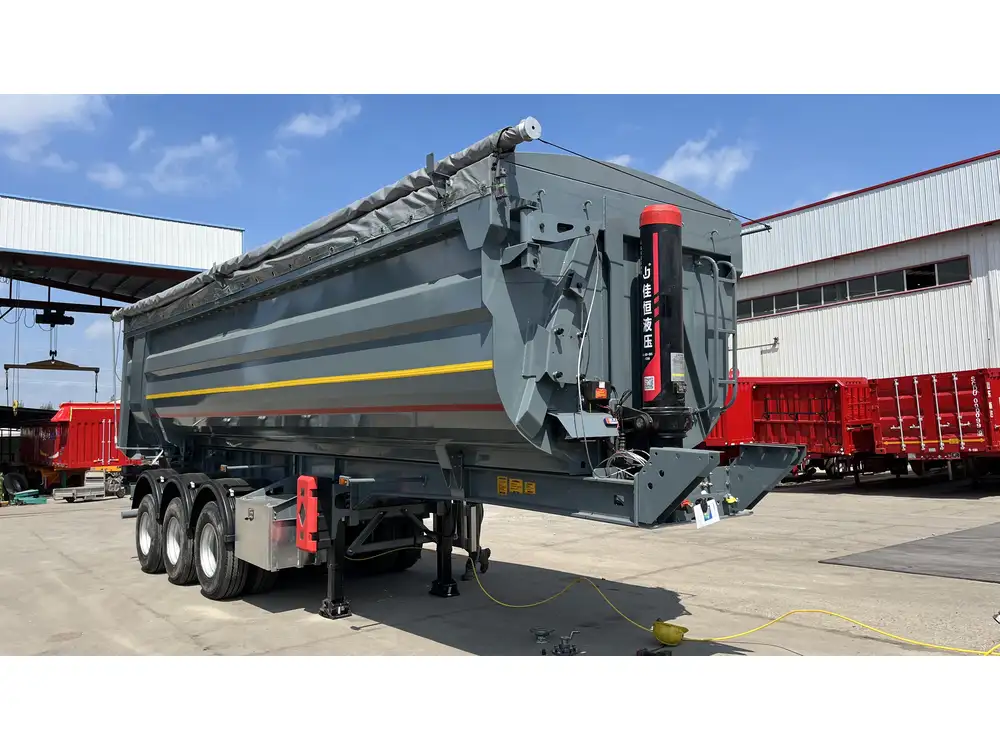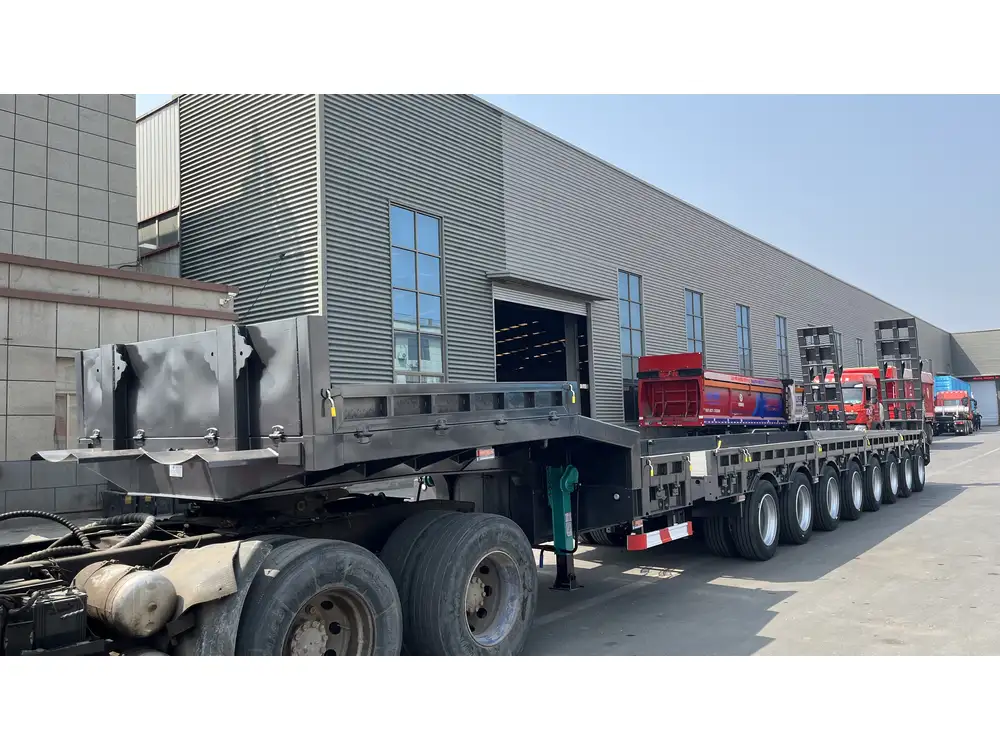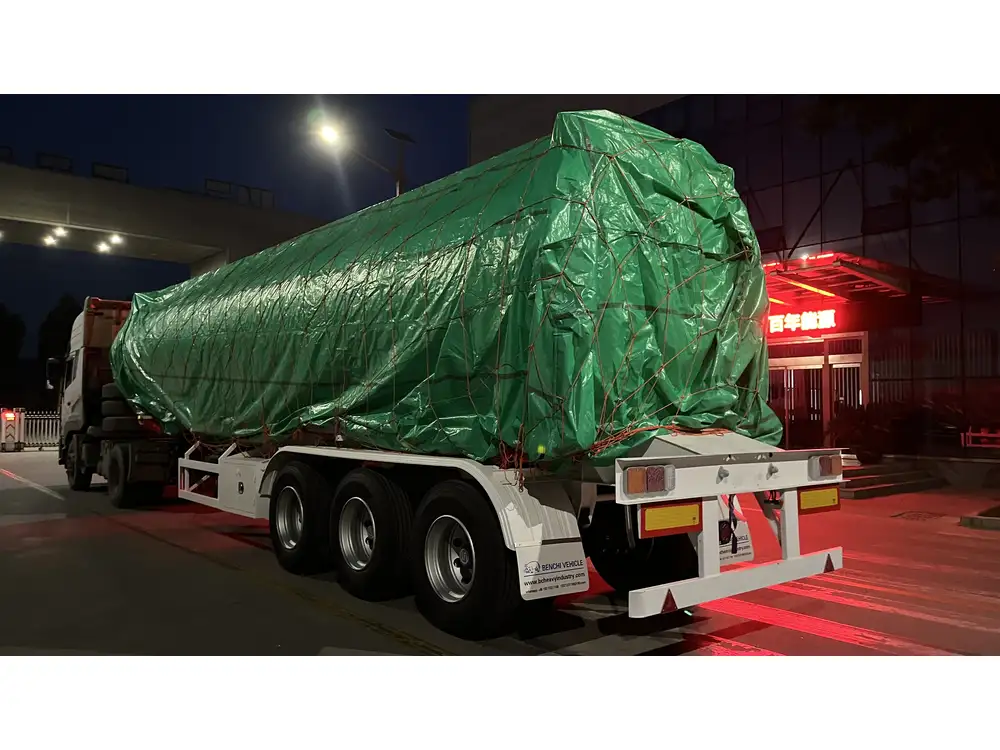Proper loading of a flatbed trailer is critical for safety, efficiency, and compliance with transportation regulations. Incorrectly loaded trailers can lead to numerous problems, including accidents, cargo damage, and legal issues. In this article, we will delve deep into the various facets of flatbed trailer loading, providing you with the knowledge and strategies necessary to ensure optimal load management.
1. Understanding Weight Distribution
Weight distribution is the cornerstone of safe flatbed loading. When loading a flatbed trailer, achieving a balanced weight across the trailer’s axles is crucial.
1.1 The Importance of Weight Balance
- Safety: Protects against trailer sway and enhances stability while driving.
- Legal Compliance: Ensures adherence to weight limits as established by DOT regulations.
- Performance Efficiency: Improves fuel efficiency and tire longevity.

1.2 Calculating Weight Distribution
To achieve proper weight distribution, follow these steps:
- Identify the Load Type: Analyze the type of load being transported (heavy machinery, building materials, etc.) and its center of gravity.
- Use Load Calculators: Implement online load calculators to assess potential weight distribution among the axles.
- Load Positioning: Position the heaviest items closest to the trailer’s axles to lower the center of gravity.
| Load Type | Recommended Placement Location |
|---|---|
| Heavy Machinery | Directly over the axles |
| Lumber & Building Materials | Balanced throughout the trailer |
| Pallets | Securely across the width |
2. Securing Cargo Effectively
Securing cargo is just as important as proper loading. Unsecured loads can shift during transport, posing significant safety hazards.
2.1 Choosing the Right Tie-Down Equipment
Different tie-down methods and materials may be employed based on the load’s nature and weight:
- Ratchet Straps: Ideal for securing heavy items. They provide tensile strength and adjustable length.
- Chain Binders: Suitable for extremely heavy loads, such as machinery. Chains offer superior strength and durability.
- Webbing Straps: Perfect for lighter loads and offer versatility in various applications.

2.2 Recommended Securement Techniques
- Direct Tie-Down: Anchor loads directly to the trailer’s D-rings or stake pockets.
- Blocking and Bracing: Use wooden blocks or metal braces to keep loads stable.
- Over-the-Top Securement: For taller loads, secure the cargo with straps or chains that go over the top to prevent lateral shifting.
| Securement Method | Advantages | Disadvantages |
|---|---|---|
| Direct Tie-Down | Quick application | Limited by tie-down locations |
| Blocking and Bracing | High stability | May add weight |
| Over-the-Top | Excellent for tall loads | Can be cumbersome to set up |
3. Loading Strategies for Efficiency
Efficient loading saves time and effort, especially for operators handling multiple loads throughout the day.
3.1 FIFO: First In, First Out
This strategy ensures that loads are organized in a way that allows for the oldest items to be loaded and unloaded first. This minimizes handling time and reduces the risk of damage.

3.2 Stacking Techniques
- Weight Stacking: Heavier items should always be placed below lighter ones.
- Layered Approach: For different size items, create layers that interlock; this enhances stability.
- Side Loader Use: If available, use side loaders for easy access and to minimize manual lifting and the associated risks.
3.3 Planning the Loading Sequence
Strategically plan the order in which items are loaded. This planning should consider:
- The final unloading sequence
- The physical obstacles that may block access to certain items
- The weight distribution requirements
| Item Type | Loading Sequence Considerations |
|---|---|
| Large Machinery | Load first to ensure balance |
| Smaller Parts | Load towards the end for easy access |
| Pallets | Stack last as they can be cumbersome |
4. Importance of Safety Regulations
Adhering to safety regulations is a legal and moral responsibility that cannot be overlooked.

4.1 Federal and State Compliance
Flatbed trailers must comply with various weight and loading regulations established by:
- Federal Motor Carrier Safety Administration (FMCSA)
- State DOT regulations
4.2 Regular Inspection of Equipment
- Trailer Condition: Regularly inspect the trailer for any signs of wear or damage that could impact loading.
- Tie-Down Equipment: Frequently test straps, chains, and others for fraying, rust, or defects.
5. Common Mistakes to Avoid When Loading a Flatbed Trailer
Even seasoned professionals can make mistakes while loading trailers. Awareness of common pitfalls can mitigate risks.

5.1 Overloading
Exceeding the trailer’s weight limit can lead to blowouts, brake failure, and accidents. Always verify the trailer’s specifications.
5.2 Improper Securement
Failure to secure loads correctly can result in the freight shifting, falling off the trailer, or even causing accidents. Always double-check all securement devices.
5.3 Neglecting Load Limits
Each trailer has specific load limits, both gross weight and load length. Ensure these are not exceeded to maintain compliance.

6. Tips for Successful Flatbed Loading
To summarize our previous discussions, here are some proven tips for enhancing flatbed loading processes.
6.1 Training for Operators
Provide operators with comprehensive training on loading techniques, equipment use, and safety protocols.
6.2 Conduct Site Assessments
Evaluate the loading site and environment prior to commencing loading. Check for:
- Uneven surfaces
- Obstructions
- Accessibility issues

6.3 Utilize Technology
Modern technology can augment loading processes. Implementing GPS systems, load monitors, and mobile apps for load planning can streamline operations.
| Strategy | Benefit |
|---|---|
| Operator Training | Reduces errors and enhances safety |
| Site Assessments | Improves efficiency and safety |
| Technology Utilization | Increases accuracy and planning |
Conclusion
Properly loading a flatbed trailer is more than just a logistical task; it is an essential practice that ensures the safety of both the driver and the cargo. By understanding weight distribution, selecting appropriate securement techniques, avoiding common mistakes, and adhering to safety regulations, you can efficiently manage the loading process.
By following the comprehensive guidelines laid out in this article and being mindful of how various techniques and strategies work together, your operations can achieve increased safety, efficiency, and compliance. Stay vigilant, keep learning, and prioritize best practices to ensure smooth transportation processes.
Remember, each successfully loaded flatbed trailer is a step toward enhanced safety, efficiency, and client satisfaction in the ever-evolving transportation industry. Embrace these principles, and you’ll find yourself well on your way to mastering the art of flatbed loading.



